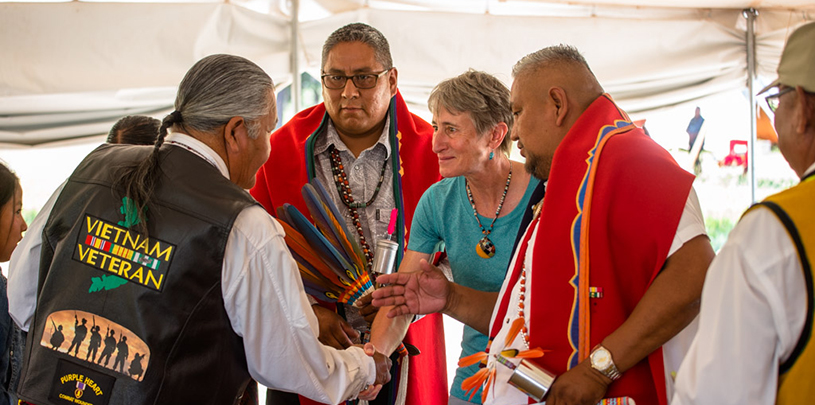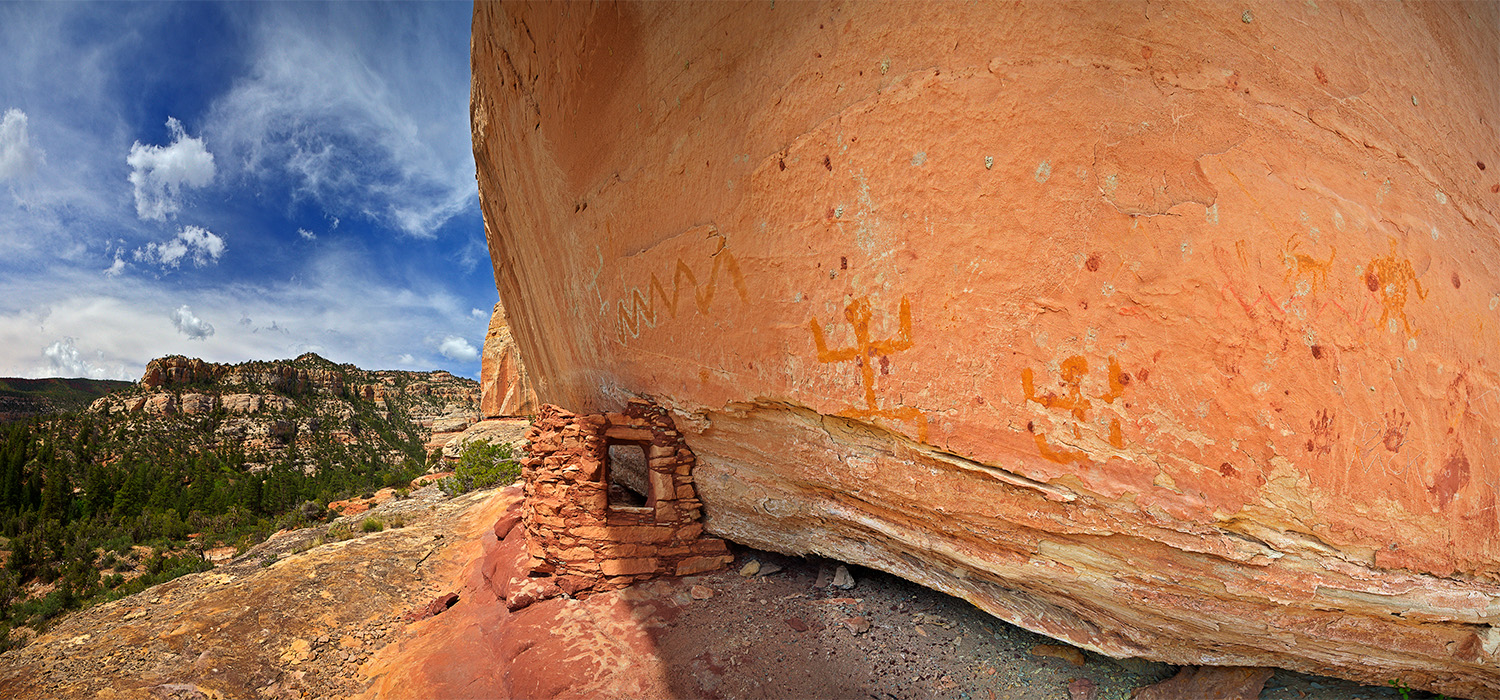
 by Tim Peterson, Cultural Landscapes Director
by Tim Peterson, Cultural Landscapes Director
You’ve probably seen the hashtag #BearsEarsHeals, but like many, you may have wondered, what’s this healing thing all about? Well, it’s simple really, but it also has a deeper meaning.
Have you ever felt rejuvenated after spending time away from the city — camping, hiking in the mountains, or even walking your dog at a local park?
You’re not alone.
Biologist Edward O. Wilson advanced the Biophilia Hypothesis in the 1980s — a phenomenon wherein people are instinctively drawn to connect with nature and other non-human forms of life. He suggested our affinity with nature is deeply encoded in our genes (a revelation that was controversial at the time).
Of course people are drawn to nature. We are nature.
But how disconnected must we be that this fundamental truth needs a name and a scientific explanation?
Fast forward several decades, and Western science is finally beginning to codify what traditional practitioners have known for millennia — nature heals. Benefits to one’s mental and physical health are measurable — just 20 minutes a day outdoors can lower stress hormones. Being outdoors raises energy levels, provides feelings of well-being, and even increases caring and empathy.
Now the idea is going mainstream — even Glamour Magazine has published a story on something called the Park Prescription. That’s right — physicians are prescribing time outdoors like they’d prescribe medication. They go so far as to recommend specific local trails to visit, how far to walk, and structured follow-ups to see how it’s going for patients. (Note: This isn’t a replacement for medication or therapy for those with diagnosed medical conditions, but the addition of a structured regime of nature therapy are real).
Backed by a growing body of scientific research, nature really does heal us.
Indigenous peoples have long known of the healing power of specific places, plants, and ceremonies. But the Bears Ears movement is about more than the power of place to heal us individually. It’s about collective healing across generations, geographic boundaries, and cultural divides.
The coming together of the five tribes of the Bears Ears Inter-Tribal Coalition was unprecedented. The Hopi, Navajo, Ute Mountain Ute, Pueblo of Zuni, and Ute tribes set aside generations-old differences, agreeing to work together to ensure the permanent protection of Bears Ears.
The original designation of the monument in 2016 was a big step toward righting centuries of injustices and wrongdoings. The wounds of colonization are real for Indigenous peoples, and they persist today. President Trump’s gutting of the monument is a setback, but we’re hopeful that when the courts or Congress restore the monument, the healing process can be fully reinvigorated.
The opportunity to heal is not just among tribes, but among non-Native people too. We have much to learn about how we and others relate to the land, our history, and the path forward. In the words of Dr. Kim TallBear:
It’s about you learning how to live here in relation with this place and with peoples who were long co-constituted in relation to these lands and waters and skies.
It will involve a long process of re-education, and it’s one most Americans haven’t even begun to conceive or consider. We owe it to ourselves, to the land, and to others to start down this path. It won’t be easy, but nothing truly worth doing is easy.
On October 8, 2021, President Biden restored full protections to Bears Ears and Grand Staircase-Escalante national monuments. Send a personal note of thanks to President Biden.

Cultural landscapes are full of stories, artifacts, and resources to appreciate. Here's how ›
Utah voters strongly support national monuments in general, and Bears Ears and Grand Staircase-Escalante in particular, a new poll shows.
Read MoreA small victory in the legal case challenging Daneros uranium mine, near Bears Ears National Monument.
Read MoreBears Ears petroglyph panels and cultural sites protected by new proposed management plan.
Read More